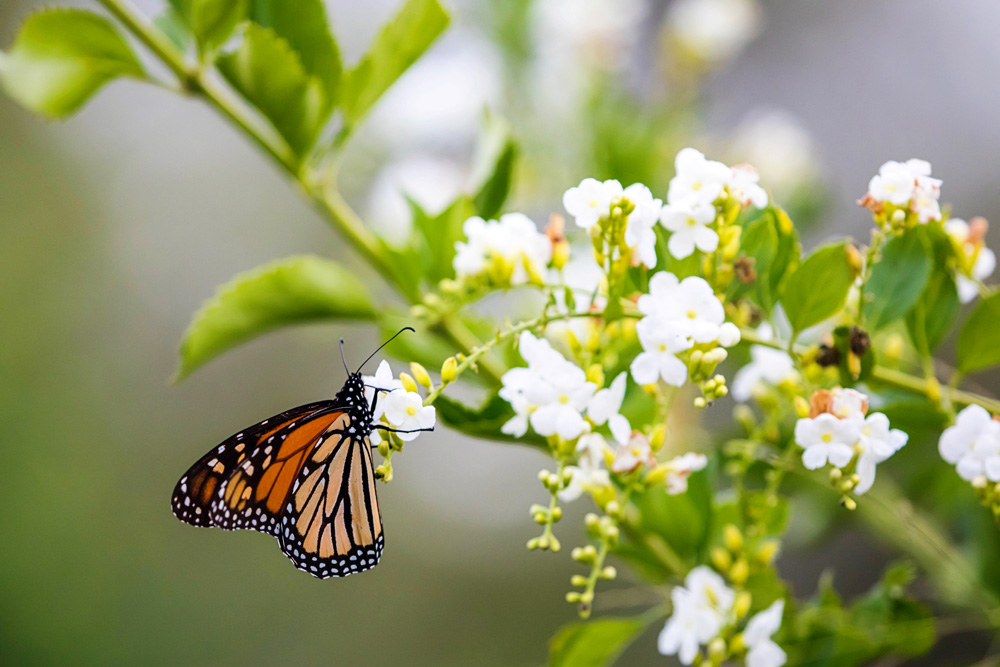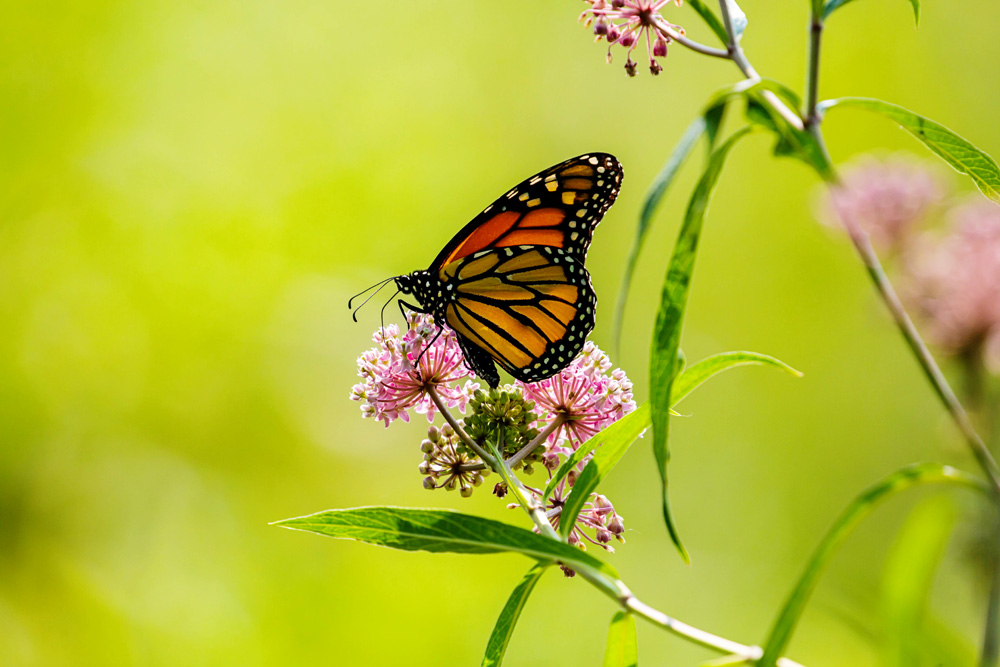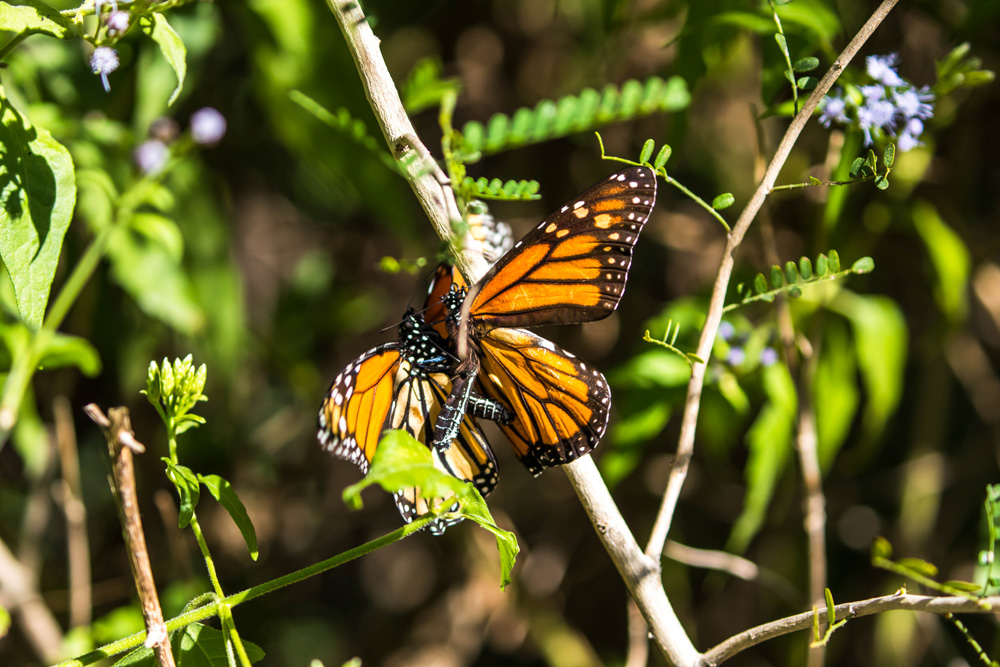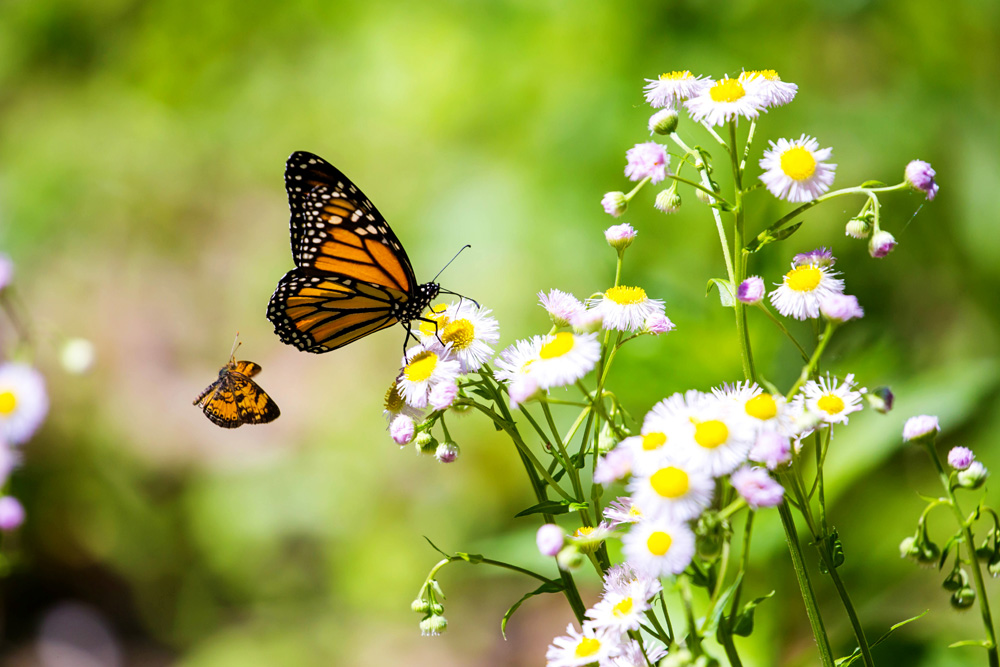NatureZen: Saving the Monarchs
NatureZen: Saving the Monarchs
words and photos by Melissa McMasters

The news this week from the International Union for Conservation of Nature has given North America’s most recognizable butterfly a bleak distinction: the migratory subspecies of the monarch is now listed as Endangered on IUCN’s Red List of at-risk species. Let’s break down what that means.
The Red List is a comprehensive account of the global extinction risk to plants, animals, and fungi. Using data about habitat, ecology, population size, range, and more, the Red List assesses threats to biodiversity and outlines conservation actions that could help slow the loss of species. Currently, the Red List has evaluated more than 147,500 species, of which 41,459 are threatened with complete extinction.
The Red List has nine categories: Not Evaluated, Data Deficient, Least Concern, Near Threatened, Vulnerable, Endangered, Critically Endangered, Extinct in the Wild, and Extinct. The migratory monarch has entered the list in the category of Endangered, which means it faces a very high risk of becoming extinct in the wild due to a significant reduction in the size of its population and the severe fragmentation or loss of its habitat.
In the case of the migratory monarch, that habitat covers a large swath of territory. In a normal year, millions of monarchs make the journey from eastern and central North America to spend the winter in the forested mountains of Mexico. Just like migratory birds, they return to us in the spring; unlike birds, they don’t wait to breed until they get to a final destination. Instead, they stop where they find milkweed plants, the only food their caterpillars will eat. They lay their eggs wherever they find a suitable milkweed cluster–almost any open habitat in the United States and Southern Canada will do.

The resulting caterpillars transform into adults who continue the northerly journey, also pausing to breed. By the end of the summer, the continent is covered in a new generation of monarchs, the final brood of which begins to move back towards Mexico. It’s extremely unlikely that any individual butterfly is making the full trip from Mexico and back, giving rise to the enthralling mystery of what instinct leads these creatures on journeys they’ve never taken before.
A second migratory monarch population that summers west of the Rockies migrates to the California coast for the winter. Perhaps you’ve been lucky enough to visit one of the colonies in Pacific Grove or Pismo State Beach during a year in which the migration was successful, and you’ve seen them dripping from the trees there. (There is also a resident population of monarchs that remains in Florida and Texas year-round; those are not included in IUCN’s listing.)
What happened?
IUCN assesses that the total population of migratory monarchs has declined by between 22% and 72% in the last decade alone, with the Western population accounting for a drop from 10 million to less than 2,000 butterflies between the 1980s and 2021. This staggering loss is due to logging and deforestation in both California and Mexico, as well as the use of herbicides and pesticides throughout the monarch’s migratory range. These chemicals kill both milkweed and the butterflies themselves, making for a twinned catastrophe. Climate change has also contributed to drought that affects the growth of host and nectar plants, while agriculture and urban development remove large swaths of previously-reliable habitat.

What can we do?
The beauty of monarch migration is that because they stop to breed wherever they find milkweed, all of us can play a role in creating welcoming places for them. We can eliminate the use of herbicides and pesticides in our gardens, and give up on the idea of the “perfect lawn,” which is effectively a desert for wildlife like butterflies and birds. Instead, we can plant native flowers that grow well in our region, including several varieties of milkweed. Here’s a guide to which species are likely to succeed here (along with a variety you should avoid).

You can also advocate for the protection of places like parks and wildlife preserves, which are managed with the goal of protecting species like the monarch. Finally, helping scientists monitor the monarch population has never been easier. You can use community science tools like iNaturalist to document your sightings of monarchs, creating data points that allow scientists to see where these fascinating butterflies are finding the resources they need.
The plain truth is that loving nature and all its gifts is not always a Zen experience. Watching the struggles of a creature that weighs half a gram and yet somehow knows exactly where it’s meant to go at summer’s end can feel like your heart is breaking in slow motion. But if human practices can contribute to those struggles, then we can certainly contribute to reversing them. Thank you for doing your part to support the conservation of all those with whom we share our piece of the planet.

Your gift to Overton Park Conservancy helps us conserve valuable wild habitat.



